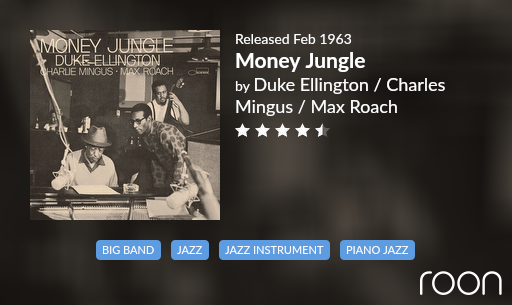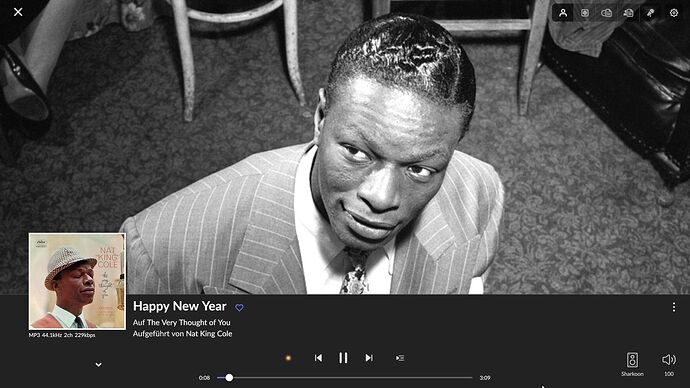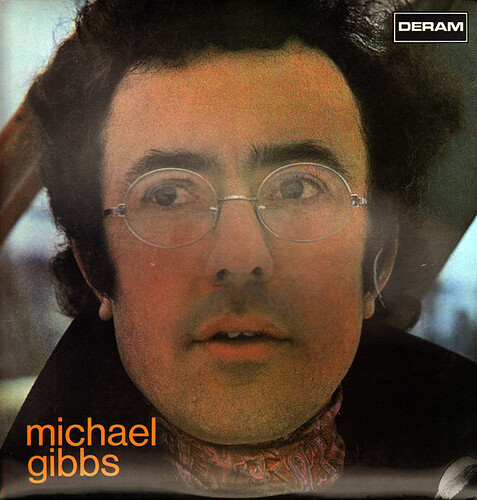This is a pretty good listen and it’s on both Tidal and Qobuz! Hopefully it’s easier to find then some others ![]()
This is excellent btw, thanks for the recommendation!
https://i.imgur.com/ig2nwiF.png
This exciting set by percussionist Babatunde Lea ranges from Afro-Cuban jazz to interplay by the three horn players that is reminiscent of Charles Mingus’ bands. There is no letup in the intensity and passion, even on slower numbers, and the use of repetition is inspired, never outlasting its welcome. Pianist Hilton Ruiz, trumpeter Kahlil Shaheed, and trombonist Angela Wellman all have their spots, but tenor saxophonist Richard Howell takes honors among the sidemen, not just for his solos but for his vocalizing on a few numbers, particularly “The Creator Has a Master Plan” and “Nature Boy.” The stirring ensembles and heated rhythms make this a particularly memorable outing that is highly recommended.
I enjoyed this recently!
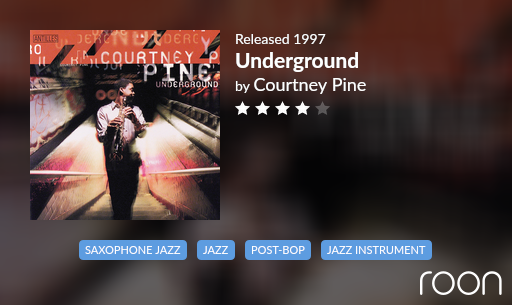
Start the new year off right with a deep listen to this amazing new release by the Umlaut Big Band, which is available on Qobuz:
Bandcamp
AllAboutJazz
https://i.imgur.com/msvuBiu.png
New Year’s Day and there is already a strong candidate for recording of the year ![]()
Happy New Year! Roll your eyes if you wish, I started the New Year off with a Miles album that continues to perplex. If you at all curious here’s an interesting article from Pitchfork:
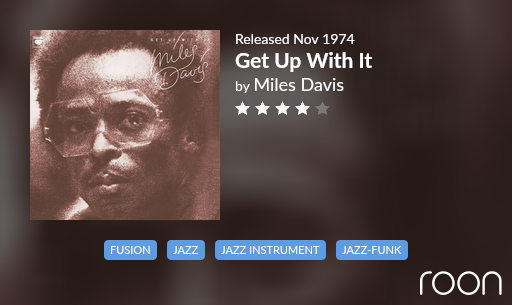
Great electric Miles album. I have three versions in my Roon library: standard CD rip, SACD rip at 24/88.2 and a vinyl rip at 24/96. “He Loved Him Madly" is one of the all time best Miles tracks.
Good morning Ralph:
I have this recording playing as I write. All new to me. Wonderful, thank you so much!
You’re welcome. I’m just finishing up listening to the entire 3 CD recording and I can’t believe how amazing it is from beginning to end. I’m totally blown away. Of course it will get ZERO radio (or satellite) airtime here the US.
I love this record by Michael Gibbs and don’t see it about much so thought I’d share. I remember first hearing it on Geoffrey Smith’s Jazz, a BBC radio program. My favourite track is still the one I heard then: And On The Third Day, with Gibbs’ student Gary Burton on vibes. It starts off simple but builds and builds into an almighty crescendo that makes the hairs stand up on the back of my neck every time. The only bad thing about this record is it’s not on Qobuz! (It is on YouTube if anyone’s curious: Michael Gibbs - And On The Third Day - YouTube)
It turns out this is on Qobuz after all. Thanks for recommending.
I see that you are located in the UK where Qobuz has the album available but here in the US no such luck.
https://i.imgur.com/WvgPXp3.png
Doesn’t appear to be on Tidal or Qobuz but highly recommended nonetheless. Here some information about the recordings to whet your appetite. By the way the sound quality is very good for most of the set.
Lennie Tristano – Personal Recordings 1946-1970 (2021)
Dot Time Records and Mosaic Records, in their first-ever partnership, have produced a 6-CD set of over two decades of amazing output from Lennie Tristano, by any measure a visionary well ahead of his time. There are several configurations herein from solo to sextet recordings, from interpretations of standards to the first free jazz of its kind, all from Tristano’s personal tape collection.
Engineered and mastered by acclaimed tenor saxophonist and longtime friend, Lenny Popkin, who also delivers a mammoth, defiant, let-me-set-the-record-straight on Tristano’s personality and music in the liners, this should shed a long-overdue positive light on the widely misunderstood jazz luminary. The project is a result of tireless work from Executive producer Michael Cuscuna and co-producers Jerry Roche, Carol Tristano (Lennie’s daughter), and Popkin.
Disc One features Tristano in trio with guitarist Billy Bauer and bassist Arnold Fishkin in live recordings from 1946/47. We can observe that a drum-less trio was rather unique at the time although Nat King Cole had the same instrumentation in his trios from almost a decade earlier. Nonetheless, it’s immediately apparent how prodigious Tristano’s piano chops were even then as improvisation, energy, and playfulness never obscure his mastery of the piano, with each note ringing clear and purposeful. Here’s an example of Tristano’s technical expertise in “Lennie’s Song” as described by Popkin,”…this one featuring his ability to play a solo in block chords, sometimes referred to as “locked Hands” style. A melody is played as a top line in the right hand with the other fingers filling out a chord. The left hand doubles the melody one octave below. I know of no other pianist who could improvise a line in that manner.”
Disc Two has fifteen tracks of solo piano recorded at both Rudy Van Gelder Studio and at Lennie’s East 32nd Street studio, a mix of standards and originals, all played emotively spanning periods in the ‘50s and ‘60s. Here his melodicism and improvisation are on full display. His feeling for the blues is deep In “Lennie’s Blues” while for example in “These Foolish Things” Popkin provides another style insight, “…begins with Lennie playing a line – all in all chords. He is improvising 4 or 5 lines at once -voices of a chord – and another line in the bass – all moving together in perfect harmony. Following that is a free-flowing melodic line in double-tempo-with a bass line harmonizing the increasingly complex top line.”
Disc Three is a collection of live sextet recordings featuring Lee Konitz (alto), Warne Marsh (tenor), Billy Bauer (guitar), Arnold Fishkin and Joe Shulman (bass) and Jeff Morton (drums). This is the first recorded performance of a group playing “free jazz” in front of an audience at a club in “Live Free.” Nothing is composed, it’s all spontaneous playing but with a clear link between swing and free playing, rather astonishing considering it takes place around 1949. Although, it’s free, it has almost no parallel to so-called later “free jazz,” sounding somehow more organized. The remaining seven tracks are not “free jazz” but highly improvisational bebop with plenty of call and response, point-counterpoint, and remarkable chord changes.
Disc Four goes the other direction – straight ahead. Tristano leads two conventional trios, both with Peter Ind on bass and drummers Tom Wayburn on one with Al Levitt on the other. These tunes, again a mix of standards and originals, reveal the lyrical side of Tristano, who is better known for more angular, improvisational fare. This is superb trio work with terrific connectivity among the three, with Ind’s bass especially impressive throughout.
Disc Five is a collection of duos and trios with bassist Sonny Dallas and drummer Nick Stabulas. These tracks are very loose and mostly swinging, revealing strong interplay and harmonic exploration, the latter especially true in the trio settings. “You Go to My Head” highlights the duo tracks while “Lennie’s Groove” showcases the trio’s swinging style.
Disc Six begins with a groundbreaking free jazz session from 1948, recorded in Tristano’s house in Queens, featuring Lee Konitz, Warne Marsh, and Billy Bauer for the first seven tracks, an entire set. Note the absence of a drummer. This predates the historic Capital sides Intuition and Digression. Much of Tristano’s work here is inventive comping as we hear impressive solos from Konitz, Marsh, and Bauer – 1948 (let that sink in). The remainder of the disc are live recordings form the Half Note club in NYC where Tristano often appeared in the ‘60s for two weeks at a time. Most are with the trio of Dallas and Stabulas with the highlight as the final track in the collection, a ten-minute version of “How Deep Is the Ocean” with Zoot Sims at his expressively soulful best and a similarly inspired Konitz. Dallas matches their fervor in his bass solo, supported by Stabulas’ nimble brush work, setting up a rousing climax authored by the pianist and the two horns. — glidemagazine.com
Hard to find a better Duke recording among an astounding legacy. Trust me.
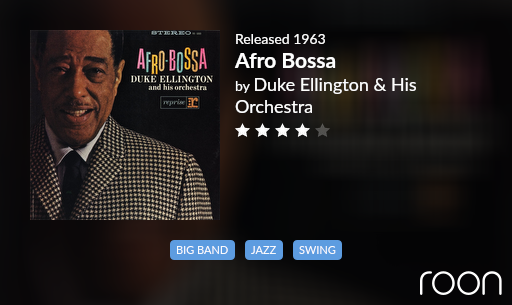
Not to question your feelings about Afro-Bossa but I think that it’s rather easy to many other Ellington recordings that are the equal of this wonderful recording, which of course is a great thing.
Here are few of my favorites
https://i.imgur.com/OVHl4To.png
https://i.imgur.com/W6RVXTt.png
https://i.imgur.com/32d5AUf.png
https://i.imgur.com/OkIHRQZ.png
I could and at some point will go on but these should keep you busy for a while.
Very wonderful selection, I know each recording well. Here’s a volley back that is always a fun ride that I’m positive you know. Yet, this may be new to some of our colleagues. A true gem.
